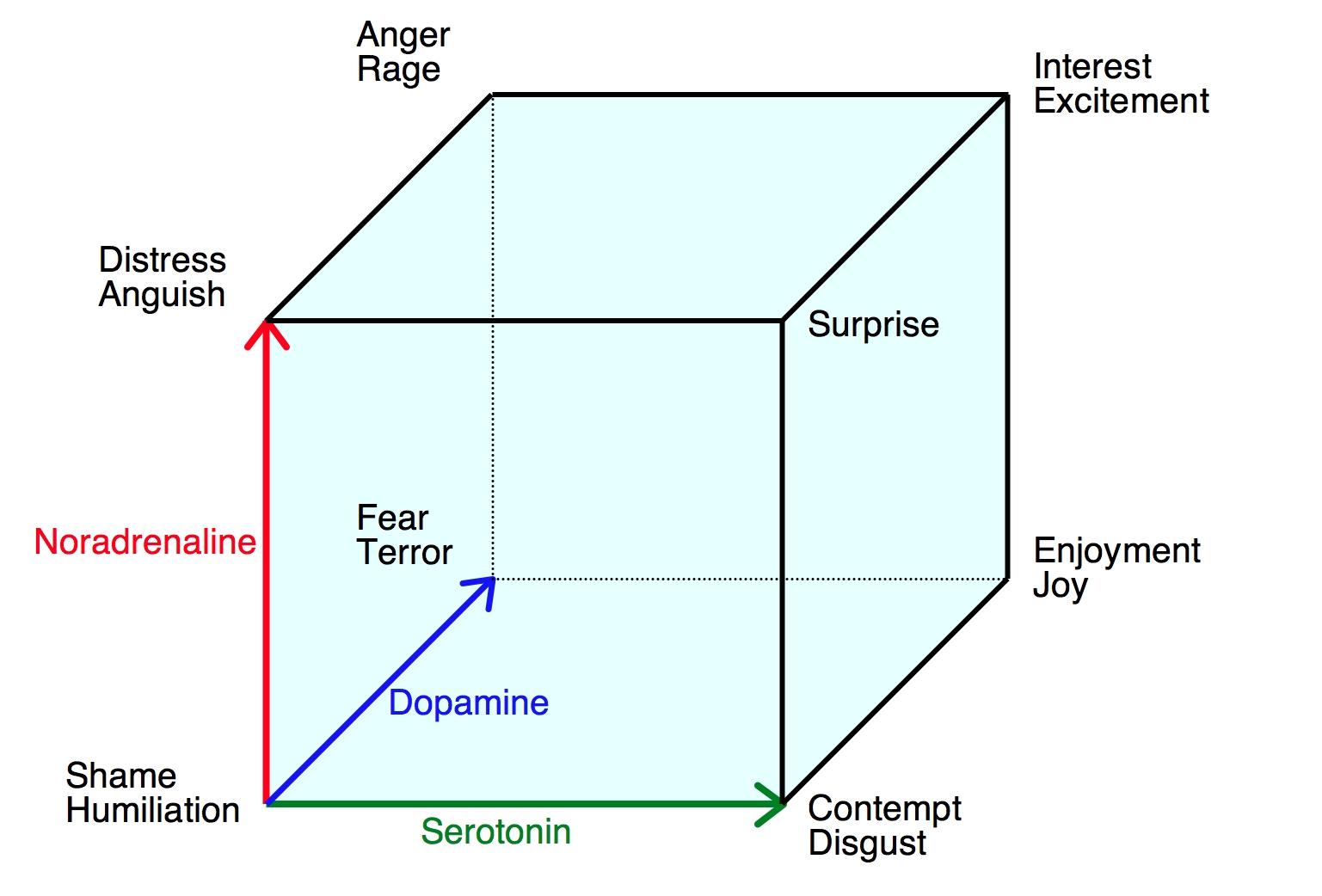This is something I hadn't seen before. Excerpt from Wikipedia:
Lövheim Cube of emotion [1] is a proposed theoretical model aiming at explaining the relationship between the monoamine neurotransmitters and the emotions. In the model, the three monoamine neurotransmitters serotonin, dopamine and noradrenaline forms the axes of a coordinate system, and the eight basic emotions, labeled according to the affect theory of Silvan Tomkins, are placed in the eight corners. The origin corresponds to a situation where no signal substance at all is released. The model hence proposes a direct relation between specific combinations of the levels of the signal substances and certain basic emotions:
Basic emotion Serotonin Dopamine Noradrenaline Shame/humiliation Low Low Low Distress/anguish Low Low High Fear/terror Low High Low Anger/rage Low High High Contempt/disgust High Low Low Surprise High Low High Enjoyment/Joy High High Low Interest/excitement High High High
Anger is for example, according to the model, produced by the combination of low serotonin, high dopamine and high noradrenaline.
Due to the direct relation to the monoamine neurotransmitters, the model might have an advantage compared to previous models of basic emotions such as, for example, Plutchik's Wheel of Emotions. Symptoms of depression might be interpreted as an emotional palette restricted to the low-serotonergic side of the Lövheim cube, where only the basic emotions shame/humiliation, distress/anguish, fear/terror and anger/rage are within reach. The core depressive symptoms of sadness and lack of interest can be interpreted as the inability to reach the basic emotions of joy and interest located on the high-serotonergic side.
There are many attempts to categorise emotions, each with their own benefits and flaws, but I like anything that comes with a strong visual. I'm scientific like that.
This one's pretty good too:
| Robert Plutchik created a wheel of emotions in 1980 which consisted of 8 basic emotions and 8 advanced emotions each composed of 2 basic ones. From Wikipedia. |
| Basic emotion | Basic opposite |
|---|---|
| Joy | Sadness |
| Trust | Disgust |
| Fear | Anger |
| Surprise | Anticipation |
| Sadness | Joy |
| Disgust | Trust |
| Anger | Fear |
| Anticipation | Surprise |
| Human feelings (results of emotions) | Feelings | Opposite |
|---|---|---|
| Optimism | Anticipation + Joy | Disapproval |
| Love | Joy + Trust | Remorse |
| Submission | Trust + Fear | Contempt |
| Awe | Fear + Surprise | Aggression |
| Disappointment | Surprise + Sadness | Optimism |
| Remorse | Sadness + Disgust | Love |
| Contempt | Disgust + Anger | Submission |
| Aggression | Anger + Anticipation | Awe |
Remember as screenwriters we're not just trying to depict emotions on screen – we're also trying to generate emotions in the heart of the viewer. Could we maybe map certain dramatic techniques to individual emotions and give audiences a more complete visceral roller coaster of experience using techniques derived from these tables and charts?
Please feel free to share your ideas and methods in the comments.

